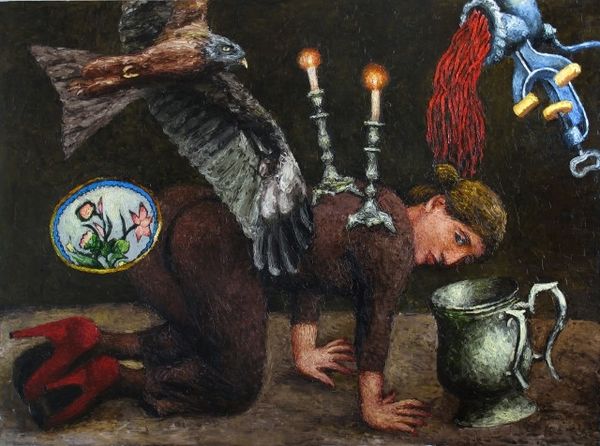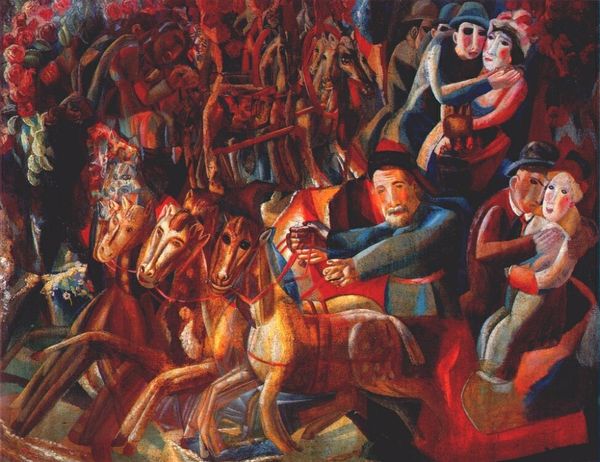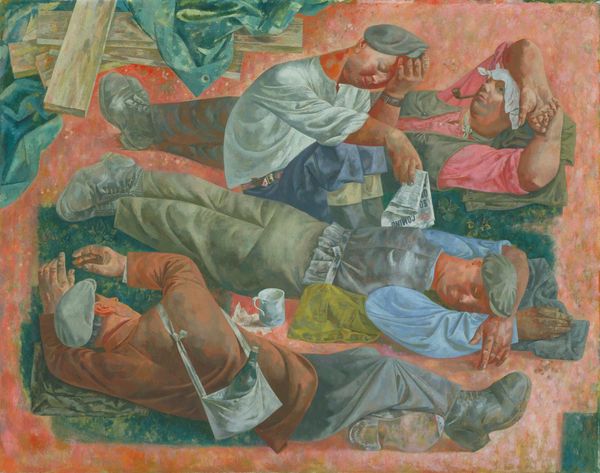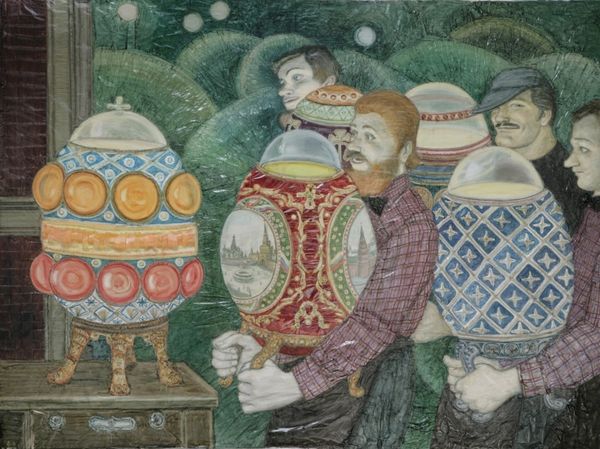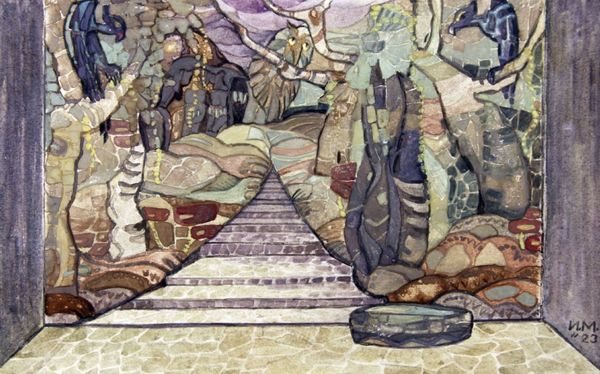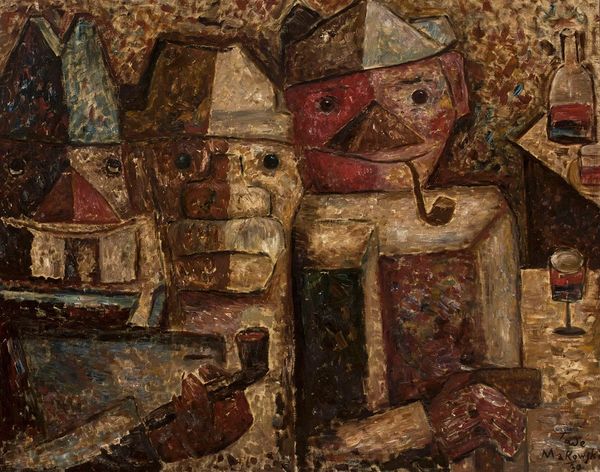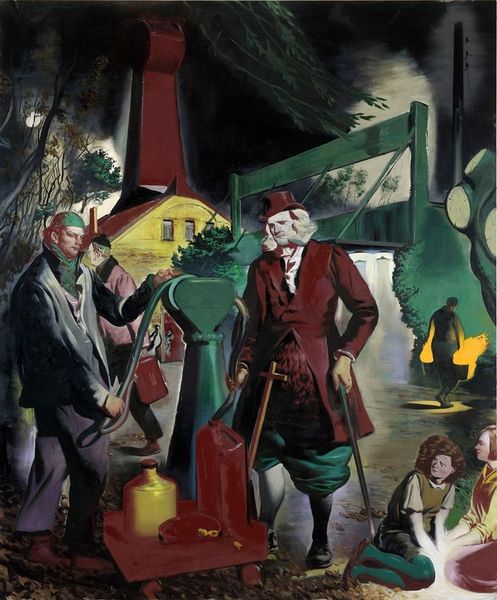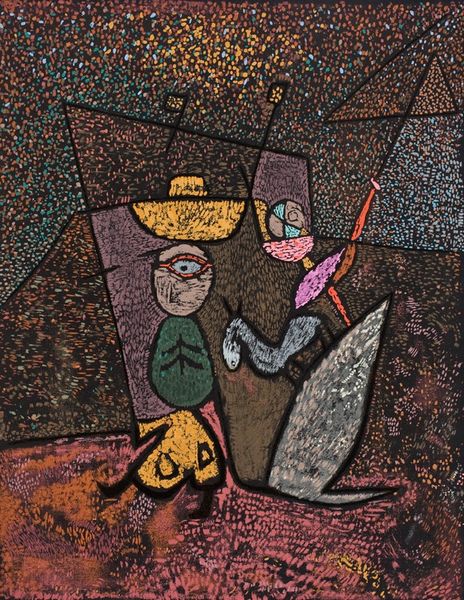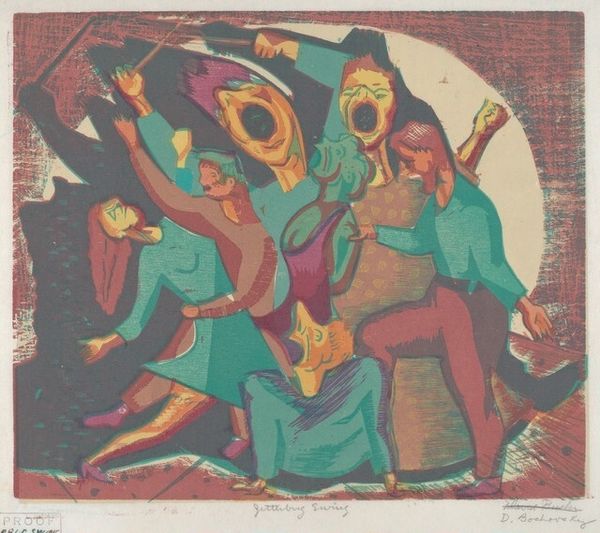
Dimensions: support: 2618 x 2745 mm
Copyright: © Steven Campbell Trust | CC-BY-NC-ND 4.0 DEED, Photo: Tate
Editor: Steven Campbell's "The Dangerous Early and Late Life of Lytton Strachey"—it's HUGE. And what a scene! It feels like a very odd fever dream to me. What's your take on this unusual painting? Curator: Steven Campbell does love to throw us into the deep end of narrative, doesn't he? It's like peering into someone's subconscious. I imagine Strachey battling his own target, weighted down by expectation, you know? Editor: Expectation? Is that the target on his back? Curator: Precisely! Or is it the arrow pointed at the seated man’s head? The man with the rope who looks exhausted. What do you think that rope is for? Editor: Good question! The whole thing feels so overloaded. Curator: Exactly. Campbell invites us to wander in this world without a map, and maybe that's the point. Editor: I see! It seems like the more you look, the more questions pop up. Thanks.
Comments
tate 7 months ago
⋮
http://www.tate.org.uk/art/artworks/campbell-the-dangerous-early-and-late-life-of-lytton-strachey-t04137
Join the conversation
Join millions of artists and users on Artera today and experience the ultimate creative platform.
tate 7 months ago
⋮
This painting depicts Lytton Strachey (1880-1932), a biographer and essayist who was a central figure in the Bloomsbury literary circle. It contains three portraits of Strachey at different ages, including a very young portrait as a cabbage. The pansy patterned wallpaper is intended to signal Strachey’s gay identity, a reference which repeats the offensive stereotype of gay men lacking traditionally ‘masculine’ traits. The arrowheads combined with a strand of beard form two profiles against the target. One is of Queen Elizabeth I, the other Queen Victoria. Strachey published books in the early 1900s criticising both monarchs. The painting's title alludes to the situation Strachey would have found himself in had either book been published during the lifetime of its subject. Gallery label, August 2021
